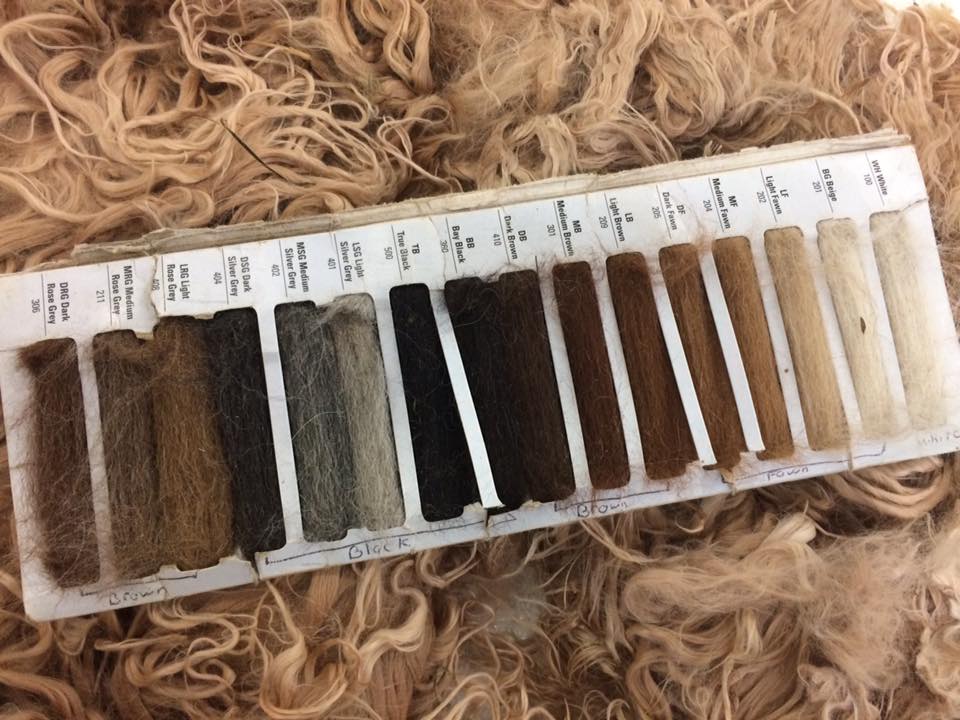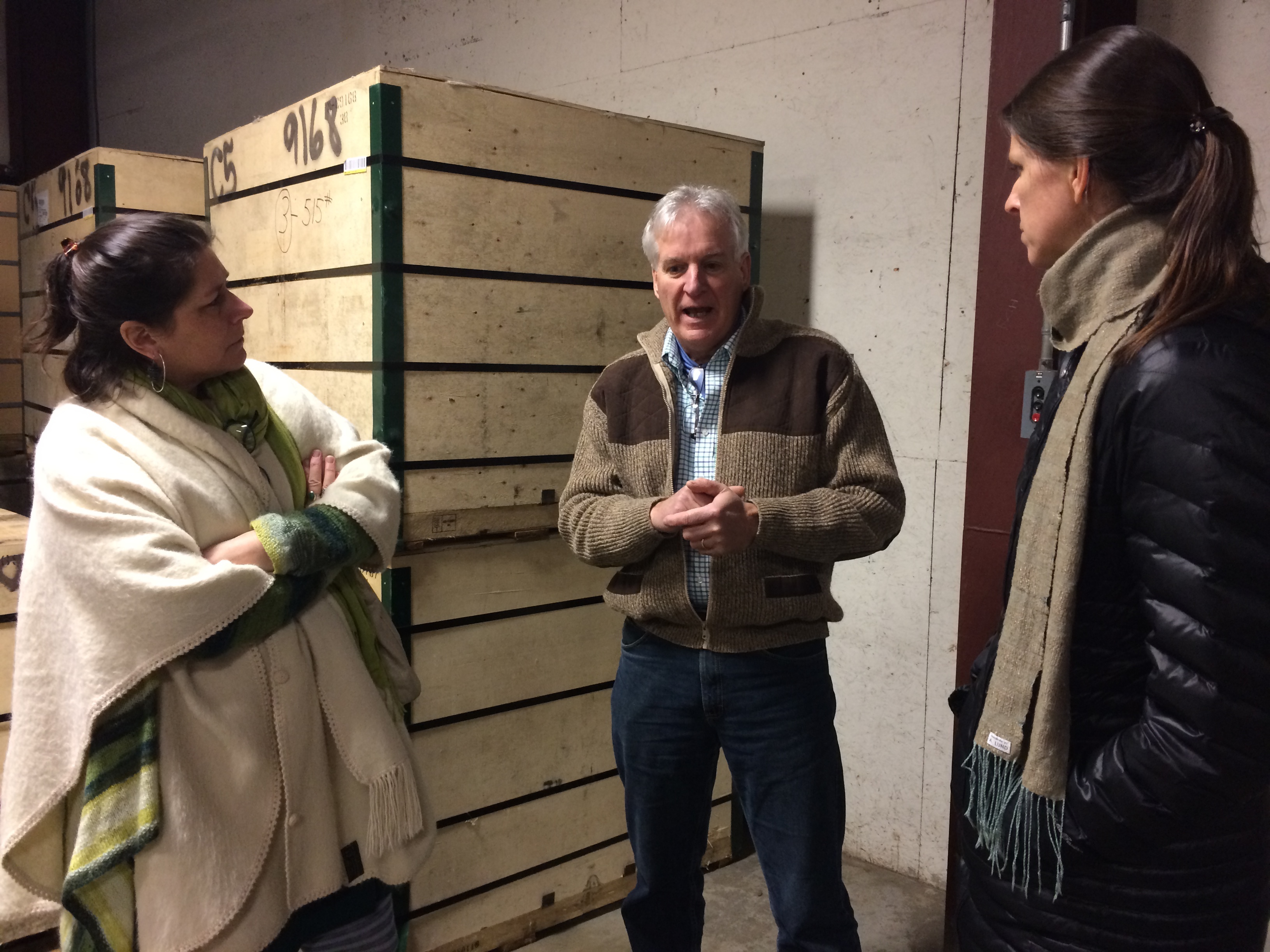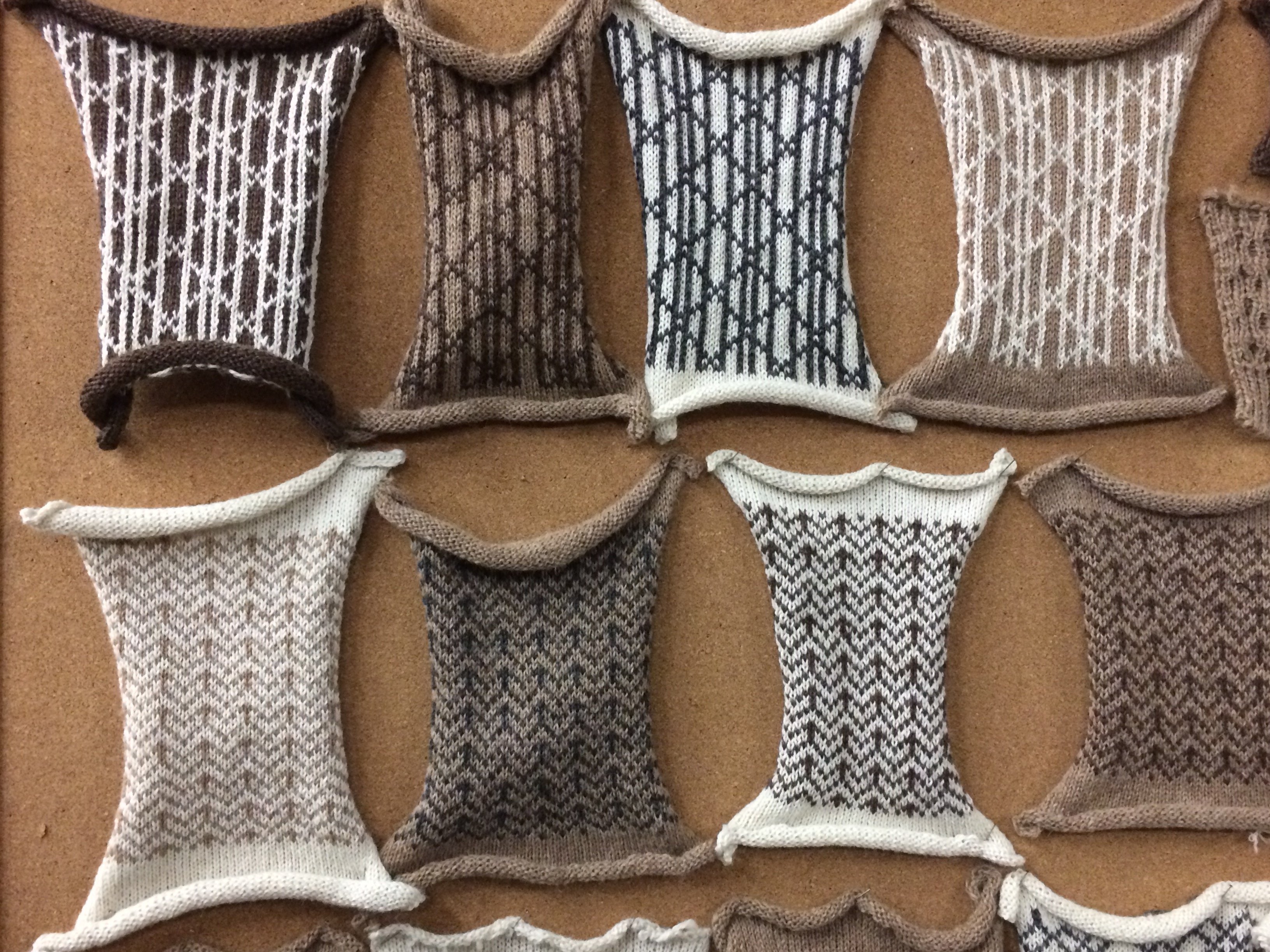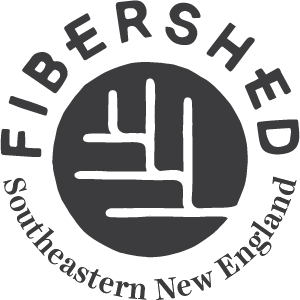
“We have seen consumer trends toward slow food for years, and next is slow fashion. To support this trend, farmers need to understand how adding natural fiber to their existing crops base can be profitable, good for the environment and what their customers want. “ – Chris Riley, Founder, New England Alpaca Fiber Pool
Story by Fibershed intern Charlotte Atkinson
Alpaca meat isn’t exactly a huge industry in the United States although one wonders why considering that the meat is lean, tender and almost sweet. Alpaca meat is not only rich in proteins, but also low in fat and has the lowest level of cholesterol of any meat. How then did the alpaca industry develop in the U.S. if alpacas weren’t valued for their protein? Unlike the long history of American sheep farming, the alpaca industry in this country has a very recent past. Americans immediately focused on superior breeding practices where the goal was to produce a healthy and structurally sound animal capable of producing the
finest luxury fiber known to man. As a result, the seed stock produced by this program was very valuable.
Today, the industry has matured to a point where animal prices have declined while demand for their fiber has increased allowing a small farm to raise alpacas and benefit from the wonderful fiber they produce.
Recently I spoke with Chris Riley, owner of the New England Alpaca Fiber Pool (NEAFP) about his business. Chris truly has a finger on the pulse of the American Alpaca Industry, as NEAFP works directly with over 4500 small farms across the country. NEAFP’s business model is a hybrid of the traditional wool pool and a farmers collective where small farms contribute fiber to produce commercially manufactured products that can be resold in their farm stores. NEAFP provides farmers with the service of pooling their fiber to produce American made finished products that increases their raw fiber’s value to $25-$60/lb. NEAFP also buys fiber (just like a wool pool) when the farm isn’t interested in finished product.

When first starting your business, how did you see the need in the industry and how have you been able to scale to the size that you are now?
“My wife and I own an alpaca farm and although we enjoy breeding and raising these animals, we were driven to find a use for their fiber. As luck would have it, Fall River MA (Spindle City) was close to our farm holding a treasure trove of historic textile mills and lots of invaluable textile knowledge. It wasn’t long before we were connected to the right people that could help us turn alpaca fiber into quality apparel.
Our benefactors had one request. If they helped us crack the manufacturing nut with alpaca, we would not send our manufacturing overseas. This guarantee was one of the best deals we ever made. On our journey we met many family mill owners that were only interested in producing quality products. It seemed a win win for all that were involved. Operating at a commercial scale, our pricing was very competitive and because we produced high quality, our farm partners have a easy time reaching their $25-$60/lb goal. So it really wasn’t any great vision of ours. Just good old Yankee Common Sense and consistently doing the right thing by everyone.”
How does the alpaca industry differ from the wool industry in America?
“You had mentioned earlier that alpaca is relatively new in this country where wool has hundreds of years of history behind it. Many years ago, wool was primarily the way people kept themselves warm, making wool sweaters and blankets prized possessions. Alpaca Fiber, although very popular in South America, is new in the U.S. and as a result does not carry the “Brand Recognition” of wool. Once people are introduced to alpaca or reintroduced to wool, they immediately recognize the superior qualities it has over cotton or synthetics. Being new is a great thing for slow fashion because customers recognize it as a
better way. I like to think of alpaca fiber as the “Killer App” for fiber farmers.”

Can you explain the specific differences between alpaca and wool fiber?
“Generally, alpaca is finer and softer than wool, but there are some specific differences between the two. One of the big advantages of alpaca is that it is a semi hollow fiber, sheep’s wool is a solid fiber. Because there are air pockets trapped in the alpaca fiber, the air tends to warm up much quicker than the solid fibers so alpaca is viewed as a warm fiber. It is also a comfortable fiber because its moisture wicking properties move moisture away from the body to the outside of the garment so it can evaporate. When you feel drier you feel comfortable. Finally, it is odor resistant (anti-microbial) allowing the garment to
smell fresh under the worst conditions. Many of these properties are being engineered into high performance synthetics. Alpaca grows them naturally.
(DISCLAIMER: Even though alpaca is generally considered higher quality and softer than most wool, there are many sheep breeds that are bred to have these same characteristics ie: not all wool is considered itchy, many wools are extremely soft and high quality.)
What are the realities of the fiber industry from the perspective of a farmer? What general struggles do they tend to face?
The real barrier for fiber farmers is that they are not quite sure what markets are available to them. Historically, wool was a by-product of raising sheep and could be used to keep a family warm along with selling the surplus to the commodity market. It really wasn’t very profitable. Now, farmers should rethink fiber as a cash crop. Due to the high demand for natural fiber products like socks, gloves, hats, blankets and sweaters, fiber farming can finally be profitable while extending the farm’s market season. Most farms understand the retail advantages of their business however it has typically been restricted to the late summer/early fall. Fiber products are perfectly suited for the very profitable gift-giving holidays allowing the farm to participate in that season as well. Farmers are a relatively resilient lot and just as they understood the impact of slow food, organics, and locally grown, I have no doubt that they will understand the impact of fiber farming. As with any change, infrastructure is needed. Education, training and community support would go a long way in making the farm feel like a community asset.

What percentage of alpaca farms in New England work with NEAFP? Are there a lot of farms that have fiber, yet don’t exactly know what to do with it?
New England Owner and Breeders Association (NEAOBA) has always supported NEAFP. In the early years of the company, NEAOBA volunteers were the firsts ones to collect fiber and offer financial support to get the pool off the ground. Without NEAOBA there may not be a NEAFP. We always remember our roots. I think it is fair to say that the majority of alpaca farms in New England use NEAFP services. Unfortunately, there are many pounds of fiber sitting in barns across the country not being
utilized. If I had to guess, they biggest culprit would be lack of supply chain infrastructure. Today, there is no easy way for farms to get their product to market. As fiber farming becomes more popular, we will have to solve this problem.
How does NEAFP support the Fibershed initiative?
The Fibershed goal is to bring an awareness around the magic of natural fiber grown in a local community in a sustainable, eco-friendly way. NEAFP has always promoted U.S. manufacturing, sustainability, and eco-friendly practices, although recently we are promoting a “grown local” approach. Unfortunately, many of our New England mills have gone out of business, and although it is possible to manufacture high quality products in the U.S., much of the local capability does not exist. To support this local appetite, NEAFP has several local initiatives under way. Grown in Massachusetts, Connecticut, New York, New England and even Oregon. These local growers pool their fiber and send it to NEAFP to be processed as its own batch and returned to them as high quality, locally grown products. Fibershed focuses on three major components; local community, environment and agriculture. They are a fantastic resource for best practices for how community farming can help fix the environment while being profitable. Fibershed has laser focus when it comes to issues surrounding the environment, community, and agriculture and we appreciate the great work they are doing with natural fibers.
FUN FACTS ABOUT ALPACAS:
➢ More than 6,000 years ago, alpacas were domesticated by the Incas. – Alpacas are herd animals, and can actually die of loneliness if there is only one.
➢ Alpacas are apart of the camelid family. Related to camels, llamas, guanaco, and vicuña.
➢ A baby alpaca is called a “cria.”
➢ Alpacas rarely spit, usually only when annoyed/frustrated.
➢ Alpacas fold their legs underneath their body when sitting into the “kush” position, which makes it easy to transport them inside of a car.
➢ When alpacas eat they act like a lawnmower; cutting off tops of grass instead of ripping at the roots.
➢ An alpacas gestation period on average is 355 days.
➢ Alpaca fiber is considered “hypoallergenic” since it does not contain lanolin, like sheep’s wool does.
➢ Alpacas are very unique in the fact that they create communal dung piles.
➢ The male alpaca mating sound is called “orgling.”
➢ Most alpacas live to be about 18, but some can live as long as age 25.
➢ There are two different breeds of alpaca; huacaya and suri. Huacaya have soft, fluffy, crimped fleece, and suris have silky locks of fiber.
➢ An alpaca’s foot is softly padded, and they don’t tear up the ground like sheep, cows, or other animals do.

One thought on “Scaling Fiber Production With the New England Alpaca Fiber Pool”